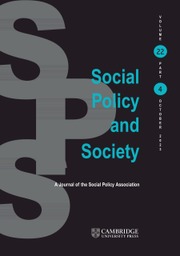Article contents
Reforming State Pension Provision in ‘Liberal’ Anglo-Saxon Countries: Re-Commodification, Cost-Containment or Recalibration?
Published online by Cambridge University Press: 28 September 2012
Abstract
There are good theoretical reasons for expecting pension reform in Anglo-Saxon countries to follow similar paths. Esping-Andersen (1990) famously identified these countries as belonging to the same ‘Liberal’ model of welfare, under which benefits, including pensions, are said to be residual and weakly ‘de-commodifying’, reducing individuals’ reliance on the market to a much lesser degree than elsewhere. Pierson (2001) has furthermore argued that because of path dependency welfare states are likely to follow established paths when dealing with ‘permanent austerity’. Following this logic, Aysan and Beaujot (2009) argue that pension reform in liberal countries has resulted in increasing re-commodification. In this paper, we review pension reforms in the UK, USA, Canada and New Zealand in the 2000s. We argue that because, in reality, the pension systems differed significantly at the point of reform, the paths followed varied considerably in terms of whether they focused on ‘re-commodification’, ‘cost-containment’ or ‘recalibration’.
Keywords
- Type
- Themed Section on Rethinking Retirement Incomes: Inequality and Policy Change in the UK and Anglo Saxon Countries
- Information
- Copyright
- Copyright © Cambridge University Press 2012
References
- 4
- Cited by




